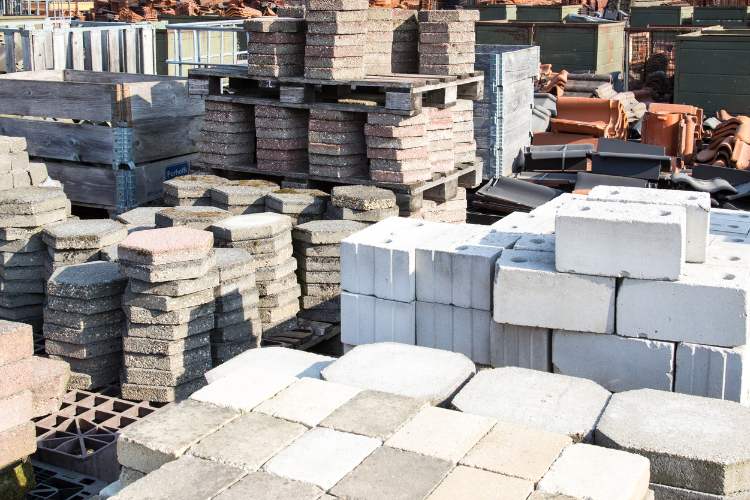In a market with infamously long payment timelines, it’s crucial for subcontractors to think strategically about how they collect payment. An airtight billing strategy can help you secure more money in a shorter time frame.
To help subs do just that, we sat down with Josh Luebker, a construction industry coach and fractional CFO for subcontracting businesses. According to Luebker, about 4 in 5 subcontractors aren’t billing strategically or collecting as much as they could in each billing cycle. When that’s the case, you’ll always be behind on invoices and can never truly quantify every dollar of what the project cost you. Thankfully, there are proven construction billing strategies for getting more each billing cycle, outlined by Josh below.
Table of Contents
About Our Expert: Josh Luebker
Luebker fell into construction as an assistant PM on a big data center project some 10 years ago. Since then, he’s held multiple PM positions on projects for other data centers, runways, CIA buildings, high rises, hospitals and stadiums. The majority of his work focused on project accounting. This experience informed his transition to fractional CFO. That accounting mastery has yielded several tangible insights relating to cash flow and billing strategies, which we will explore here.
1. Front-End Load Your Schedule of Values:
“If you do this, you can realistically have 30-50% of a project billed in 2-3 months,” he says.
This means billing line items for:
- Mobilization
- Permitting costs
- General conditions
- Overheard
- Procurement team
- Legal team
- Materials
- Submittals
Work with the golden rule in mind: “If I get billed for it, I want to make sure that I have a way to bill for it.”
2. Don’t Leave Pay-When-Paid Open-Ended
Whenever you encounter a Pay-When-Paid clause that says the sub shall be paid within 7 days of the GC being paid, Luebker recommends you add a caveat: It will be within 7 days of GC payment or within 45 days of pay app submission, whichever is less. This way, your receivable is not entirely dependent on the GC’s payment timeline. “Let’s say the owner and the GC get into a fight and they don’t pay the GC, you want to be able to still get paid,” Luebker says.
3. Bill Retainage Earlier
When the industry average is 10% overhead, 5% profit and 10% retainage, it’s tough to wait until the end of a project to collect retainage. That’s why Luebker advocates for billing retention at 50% when you’re at 50% of the project. “You may be overbilled at first, but you won’t be as the project winds down.”
4. Do Change Orders Fast and Bill for Them Even Faster
Submitting a change order quickly allows you to bill for it quickly, rather than waiting for days or months. If the change order is written for the current month, then you can bill for it by the end of the month. A common tactic GCs use is to delay approval until the beginning of the next month, so it’s crucial to stay on top of GCs regarding time and material for the change orders they want executed. If you did all the work for a change order and they finalize it the day after the end of the month, and you’ve just spent $50,000 on it, you’re going to be sitting on that expense longer.
5. Know That Relationships Take You the Furthest in Billing
Telling your customer where you need to be and asking them what they think – level setting on billing expectations – will take you far. “That’s saved me more times than not,” Luebker says. It varies between companies, but PMs and/or Supers are the best touchpoints for billing relationships, with the Super typically verifying quantities, and the PM approving it to the payroll team. It’s important to know the hierarchy of who you can ask for what. “PMs can make things happen when AP processes get backed up. Supers aren’t involved quite as much.”
How to Handle Billing Pushback from the GC
There is always the potential for pushback from the GCs, but it will depend on how you present it to them. If you just hand them a bill for 50% of the project, it will be a hard sell. But if you walk them through line items, explaining all the manpower, planning and permitting you need to handle, you can justify down to the dollar why you have to charge what you’re charging.
You can also make the case that by billing for all of this at an early stage, the GC is buying peace of mind that many critical aspects of project delivery are now secured and paid for. No matter what, you should always pick up the phone and give your customers a heads up on a big incoming bill so that it does not feel like a shock.
4 Tips to Execute Your New Billing Process
- Level with the GC: The process can be as simple as leveling with them about the new billing process you’re trying. Focus on transparency and, as mentioned, go through line items and explain why your number is what it is.
- Expect the GC to Expect It: GCs generally won’t be scared away by this type of billing; they’re aware that good subs know to bill this way. “You can tell, as a GC, which subs know what they’re doing, because they bill strategically and you have to try to reel them in.”
- Push Until You Get Pushback: The worst they’ll say is that it’s too much. And frankly, “you want the GC to say ‘That’s too much,’ otherwise you didn’t push hard enough,” Luebker says. “Worse case scenario, you just redo a billing, which takes 3 minutes. But maybe you get an extra $15,000 out of it. They’re not going to pull the contract.”
- Use Data to Be More Confident: “It all comes down to data.” Backup your numbers. If you can show you’re not pulling these numbers out of thin air, you’ll appear more confident and stand a much better chance of securing a positive outcome.
The goal is to be overbilled to the point where, come month 3, you get the first payment and your cost-to-date wasn’t much more than that payment. In essence, you’re working on their dime, not yours.
Luebker touched on how expensive the industry is getting for companies who haven’t mastered these processes. Not getting paid for 60-90 days and not having a tight billing cycle could “ultimately put people out of business,” he speculated. GCs lag on payment, but your bills simply can’t wait.
The inequities of the construction financing landscape are unlikely to change, but stronger, more intentional billing strategies could be one of many ways that subcontractors begin to close that gap.









